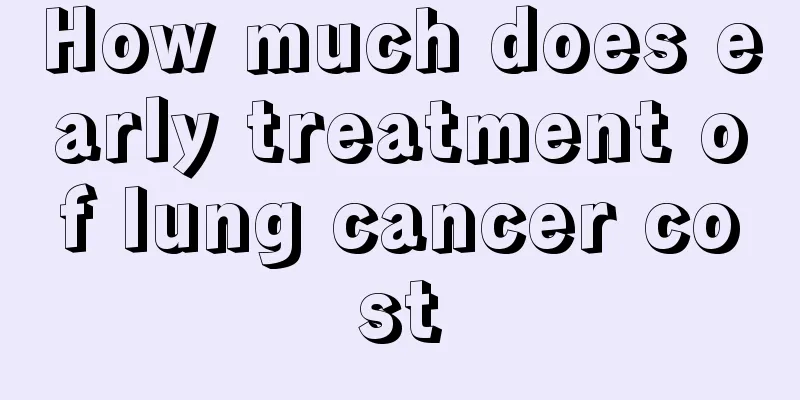Human body structure and function

|
The human body is composed of different structures, such as cell structure, blood, muscles, bones and brain. Different structures have different functions, and it is because of these structures that the human body has normal functions and various abilities. Of course, if these parts become diseased, it will naturally affect the health of the human body. Below, we will give you a detailed introduction to the structure and function of the human body. 1. Cell Structure It can be divided into three parts: cell membrane, cytoplasm and nucleus. The cell membrane is mainly composed of proteins, lipids and carbohydrates. It protects the cells, maintains the stability inside the cells and controls the exchange of substances inside and outside the cells. The cytoplasm is the center of cell metabolism and is mainly composed of water, protein, RNA, enzymes, electrolytes, etc. Various organelles are also suspended in the cytoplasm. The main cell organelles include mitochondria, endoplasmic reticulum, lysosomes, centrosomes, etc. The cell nucleus is surrounded by the nuclear membrane and contains the nucleolus and chromatin. Chromatin contains nucleic acids and proteins. Nucleic acids are substances that control the heredity of organisms. 2. Blood The total blood volume of the human body is about 8% of body weight. If blood loss exceeds 20% of the body's blood volume at one time, life activities will be hindered. Healthy people can generally recover quickly if they lose no more than 10% of their blood at a time. 3. Muscle There are approximately 639 muscles in the human body. It is composed of about 6 billion muscle fibers, the longest of which is 60 cm long and the shortest is only about 1 mm. Large muscles weigh 2000 grams, while small muscles weigh only a few grams. The average person's muscles account for 35%-40% of their body weight. The total length of capillaries in muscles can reach 100,000 kilometers, which is enough to circle the earth two and a half times. 4. Bones Bones are hard tissues inside or on the surface of the human or animal body. There are two types. The skeleton of humans and higher animals is inside the body and is composed of many bones, which is called endoskeleton; the hard shell outside the body of arthropods and mollusks and the scales and shells on the surface of some vertebrates (such as fish and turtles) are called exoskeleton. The skeleton usually refers to the endoskeleton. Bones are hard organs that make up the skeleton of vertebrates. Their functions are to move, support and protect the body; produce red blood cells and white blood cells; and store minerals. Bones are made up of a variety of shapes and have a complex internal and external structure that allows bones to remain strong while reducing weight. One of the components of bones is mineralized bone tissue, which has a hard honeycomb-shaped three-dimensional structure inside; other tissues include bone marrow, periosteum, nerves, blood vessels and cartilage. The human skeleton plays a supporting role in the body and is part of the human musculoskeletal system. Adults have 206 bones. Bones are generally connected by joints and ligaments. 5. Brain The brain is made up of about 14 billion cells, weighs about 1,400 grams, the cerebral cortex is about 2-3 mm thick, and the total area is about 2,200 square centimeters. It is estimated that 1,000 to 100,000 brain cells die every day (the less you use your brain, the more brain cells die). The information storage capacity of a person's brain is equivalent to that of 10,000 libraries with 10 million books each. Even the person who is best at using his or her brain only uses 10% of his or her brain capacity in his or her lifetime. The main component of the human brain is water, accounting for 80%. Although it only accounts for 2% of human body weight, its oxygen consumption accounts for 25% of the body's oxygen consumption, and its blood flow accounts for 15% of the heart's blood output. 2,000 liters of blood flow through the brain in a day. The energy consumed by the brain is equivalent to about 25 watts in electrical power. |
<<: Signs of unsuccessful weaning
>>: Distribution of human organs
Recommend
Is nasopharyngeal cancer contagious? What causes it?
Is nasopharyngeal cancer infectious? How is it ca...
What are the side effects of dust mite drops?
Dust mite drops are a treatment for allergic rhin...
How to remove harmful gases such as formaldehyde?
Modern people's living conditions have greatl...
Daily health care knowledge for uterine cancer
Many women will suffer from uterine cancer. Patie...
The role of ovulation hormone
Oocyte-stimulating hormone, also known as follicl...
What to do if 502 glue splashes into eyes
The characteristic of 502 glue is that it is easy...
What to do if your hands turn black after eating pomegranates
Pomegranate is a very delicious fruit. It not onl...
What are the hazards of double eyelid surgery to the eyes
Female friends who love beauty will choose plasti...
What tests should be done for colorectal cancer
Nowadays, the incidence of colorectal cancer is e...
What is the reason for acne under the cheeks
Acne on the face is a troublesome thing for young...
Methods for treating allergic rhinitis
Generally, diseases are most likely to breed in l...
How to improve poor immunity and susceptibility to colds?
When seasons change, the air changes from hot to ...
Yellow water with blood before colonoscopy
There are many patients with gastrointestinal dis...
Does acne need treatment
Acne, also known as acne, is a problem that many ...
Can I eat Liangpi while losing weight?
Liangpi is a typical representative food of the n...









